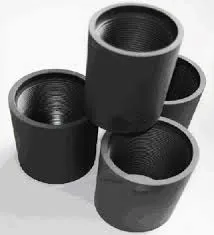- Afrikaans
- Albanian
- Amharic
- Arabic
- Armenian
- Azerbaijani
- Basque
- Belarusian
- Bengali
- Bosnian
- Bulgarian
- Catalan
- Cebuano
- Corsican
- Croatian
- Czech
- Danish
- Dutch
- English
- Esperanto
- Estonian
- Finnish
- French
- Frisian
- Galician
- Georgian
- German
- Greek
- Gujarati
- Haitian Creole
- hausa
- hawaiian
- Hebrew
- Hindi
- Miao
- Hungarian
- Icelandic
- igbo
- Indonesian
- irish
- Italian
- Japanese
- Javanese
- Kannada
- kazakh
- Khmer
- Rwandese
- Korean
- Kurdish
- Kyrgyz
- Lao
- Latin
- Latvian
- Lithuanian
- Luxembourgish
- Macedonian
- Malgashi
- Malay
- Malayalam
- Maltese
- Maori
- Marathi
- Mongolian
- Myanmar
- Nepali
- Norwegian
- Norwegian
- Occitan
- Pashto
- Persian
- Polish
- Portuguese
- Punjabi
- Romanian
- Russian
- Samoan
- Scottish Gaelic
- Serbian
- Sesotho
- Shona
- Sindhi
- Sinhala
- Slovak
- Slovenian
- Somali
- Spanish
- Sundanese
- Swahili
- Swedish
- Tagalog
- Tajik
- Tamil
- Tatar
- Telugu
- Thai
- Turkish
- Turkmen
- Ukrainian
- Urdu
- Uighur
- Uzbek
- Vietnamese
- Welsh
- Bantu
- Yiddish
- Yoruba
- Zulu
well tubing and casing
Tubing and Casing The Backbone of Oil and Gas Wells
In the oil and gas industry, the integrity and efficiency of well design are paramount to successful extraction. The two critical components that contribute significantly to the well’s structural integrity and operational functionality are tubing and casing. Both play distinct and essential roles in ensuring that wells operate safely and effectively.
What is Casing?
Casing refers to the series of tubes installed in the wellbore during drilling operations. Made of steel, these tubes are essential for providing structural support to the well and preventing the walls of the borehole from collapsing. Casing also serves to isolate different formations encountered during drilling, thereby preventing cross-flow between them. This isolation is critical as it prevents the contamination of freshwater aquifers by oil, gas, or drilling fluids.
The casing process involves several steps. After drilling to the desired depth, the borehole is cleaned and prepared for the casing installation. The casing is then lowered into the hole, and cement is pumped into the annular space between the casing and the borehole wall. This cementing process provides added strength and seals off any zones that could allow fluids to migrate.
Casing is categorized into several types, including surface casing, intermediate casing, and production casing, depending on the specific functions they serve at various depths. Each type is designed to withstand different pressures and environmental conditions, ensuring the well remains stable throughout its operational life.
What is Tubing?
While casing provides the structural backbone of the well, tubing plays a crucial role in the actual production of oil and gas. Tubing is a smaller diameter pipe that runs through the casing and extends from the surface into the production zone. Its primary function is to transport hydrocarbons from the reservoir to the surface.
well tubing and casing

The tubing is designed to withstand not just the internal pressures of the produced fluids but also external pressures from the surrounding formations. Tubing can be installed after the completion of the casing phase and is usually linked to various production equipment on the surface, such as pumps and separators.
One of the significant advantages of tubing is its ability to be easily removed and replaced if necessary. This is particularly useful during maintenance operations when production needs to be halted temporarily. The ability to replace tubing without having to replace the entire casing system helps maintain operational efficiency and reduces costs.
The Challenges and Innovations in Tubing and Casing
The demand for oil and gas continues to rise, necessitating innovations in well construction techniques, including advancements in tubing and casing. Engineers and geologists are constantly challenged by complex geological formations that can influence the well's output and safety. Innovations in materials, such as the introduction of corrosion-resistant alloys and advanced cement formulations, have significantly improved the longevity and reliability of tubing and casing systems.
Additionally, the advent of smart well technologies, which integrate sensors and monitoring systems into the well construction, allows for real-time monitoring of pressure, temperature, and other critical parameters. This capability helps in the early detection of potential failures in tubing and casing, thus allowing for timely interventions and maintenance.
Conclusion
Tubing and casing are indispensable components of oil and gas wells, ensuring both structural integrity and efficient production. As the industry moves towards more challenging environments, the continued innovation in these areas will be crucial. Advances in materials science and engineering not only promise to improve the efficiency and safety of operations but also play a vital role in meeting the world's growing energy demands. Understanding and optimizing tubing and casing designs are therefore not just technical necessities; they are strategic imperatives in the ever-evolving landscape of the oil and gas industry.
-
Tubing Pup Joints: Essential Components for Oil and Gas OperationsNewsJul.10,2025
-
Pup Joints: Essential Components for Reliable Drilling OperationsNewsJul.10,2025
-
Pipe Couplings: Connecting Your World EfficientlyNewsJul.10,2025
-
Mastering Oilfield Operations with Quality Tubing and CasingNewsJul.10,2025
-
High-Quality Casing Couplings for Every NeedNewsJul.10,2025
-
Boost Your Drilling Efficiency with Premium Crossover Tools & Seating NipplesNewsJul.10,2025







